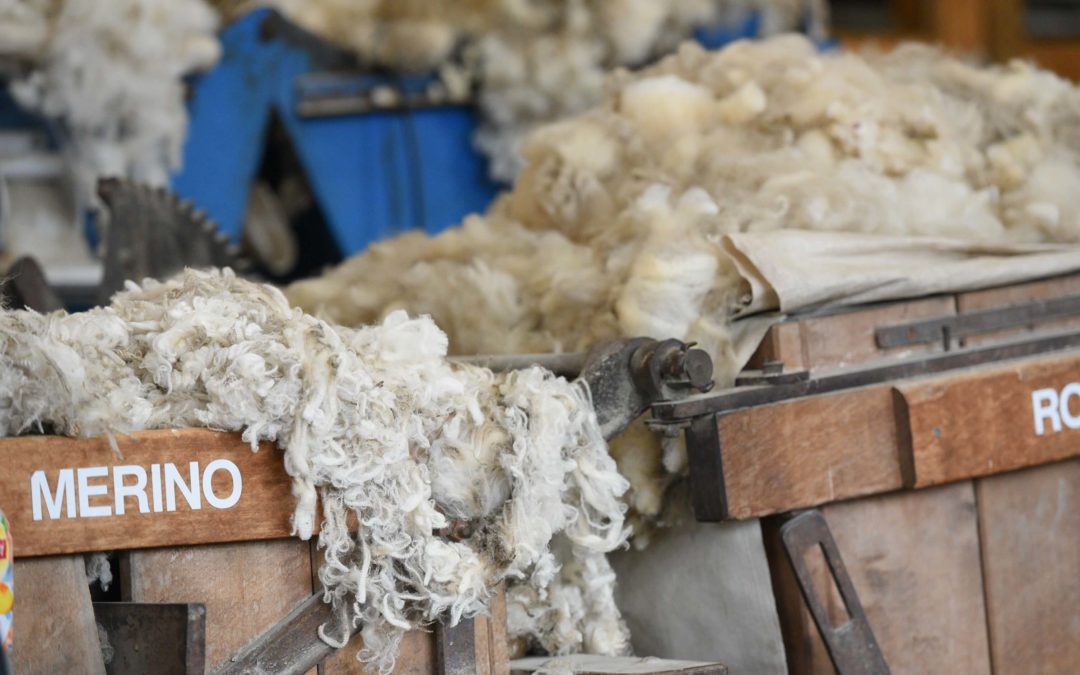Most people are familiar with merino wool, where it comes from, and the garments produced from it, like sweaters, socks, gloves, and more. However, not everyone can truly say they understand how merino wool is made, the production process, and what merino types are available.
Table of contents
If you’re curious about how the merino in your knitwear is made and how much time and effort goes into its production to achieve the end result, you can learn all about that and more below.
What Is Merino Wool?
To truly understand what merino wool is, you have to understand what traditional wool is. Wool grows on a sheep’s body. It’s quite elastic in nature, and wool manufacturers generally determine a wool’s quality by how much crimp it has.
The crimp refers to the number of bends you can see in the wool’s fibre per unit length. The more crimps there are in the wool, the longer and finer it is, and the better it may be for spinning.
What you typically notice in traditional wool is that garments made from the wool of this sheep are itchy. This is because the fibres are short and rub against your skin.
The wool on merino sheep tends to be much different. It has a fine crimp and a diameter of generally less than 24 microns. Microns refer to the diameter of the thread. Merino fibres are longer, softer, and much more comfortable against your skin compared to traditional wool.
Merino Wool Production Process
Now that you understand how desirable merino wool fibres are, you might be curious about how they go from being on the sheep to in your favourite pair of merino socks. It’s a multi-step process that we’ll cover in detail below.
Step 1: Shear the Sheep
NZ merino garments from leading knitwear manufacturers are generally made in NZ from NZ merino wool. Shearers shear the sheep with mechanical shearers once a year, which is then folded, rolled, and examined to check its quality in a process called wool classing.
Step 2: Sort and Clean the Wool
Once the wool is shorn from the sheep, it’s sorted based on where it comes from. Some parts of the wool are coarser than others based on whether they were more or less ‘exposed’ on the sheep.
The wool is then scoured in cleansing agents such as water, soap, alkalis, and soda ash, to remove dirt, grease, sand, and other contaminants.
Step 3: Card the Wool
After the cleaning process, the merino wool fibres are generally tangled and lumped together. Metal teeth, like those on carding brushes, help separate the fibres into long threads, which are then blended into groups to form a wool top.
Step 4: Spin the Top
When merino wool manufacturers have formed the wool tops, the spinning process begins by drawing out, twisting, and binding the fibres together to lengthen and strengthen them.
There are two standard spinning techniques: worsted spinning and woollen spinning. Worsted spinning uses long fibres to create a tightly woven yard with a smooth texture, while woollen spinning uses short fibres to create loosely woven, bulky yarn.
Step 5: Weaving/Knitting
After the merino yarn is made, it’s woven or knitted. A mechanical loom is used for consistency and smoothness with the weaving process, while knitting consists of interlocking loops in various patterns.
Step 6: Dyeing and Finishing
Once the weaving and knitting are complete, the merino wool fabric for garments is dyed and finished. Generally, the fabric is put into water to interlock the fibres, followed by decatising (mechanical softening treatment) to avoid shrinkage when the final garment is made.
Step 7: Create Your Finished Garment
After these steps above, merino wool producers can now turn their beautiful merino fabric into sweaters, underwear, socks, beanies, and other garments, ready for consumers to add to their wardrobes.
Main Merino Types Used to Manufacture NZ Knitwear
The merino sheep we have in New Zealand, located primarily in the South Island, produce high-quality fine wool of 12-24 microns. However, many different merino sheep breeds may also be used for various merino garments, depending on where in the world you shop and which suppliers your chosen store like Ecowool uses.
Shop For Merino Clothing and Accessories Today
It’s only natural to be curious about where your clothing comes from and how it’s made, especially when you worry about sustainability and ethical sourcing. Now that you know the entire process for merino garment creation from start to finish, you can shop with complete confidence knowing that you’re buying something that has had love, time, and attention put into it for your benefit.
What Are Some Tips for Wearing and Styling Merino Wool Clothing?
Some tips for wearing and styling merino wool clothing include layering for warmth, avoiding over-washing to maintain quality, and pairing it with neutral-coloured accessories.
How Does the Price of Merino Wool Compare to Other Types of Wool?
Merino wool typically commands a higher price than other types of wool due to its superior quality and performance.

